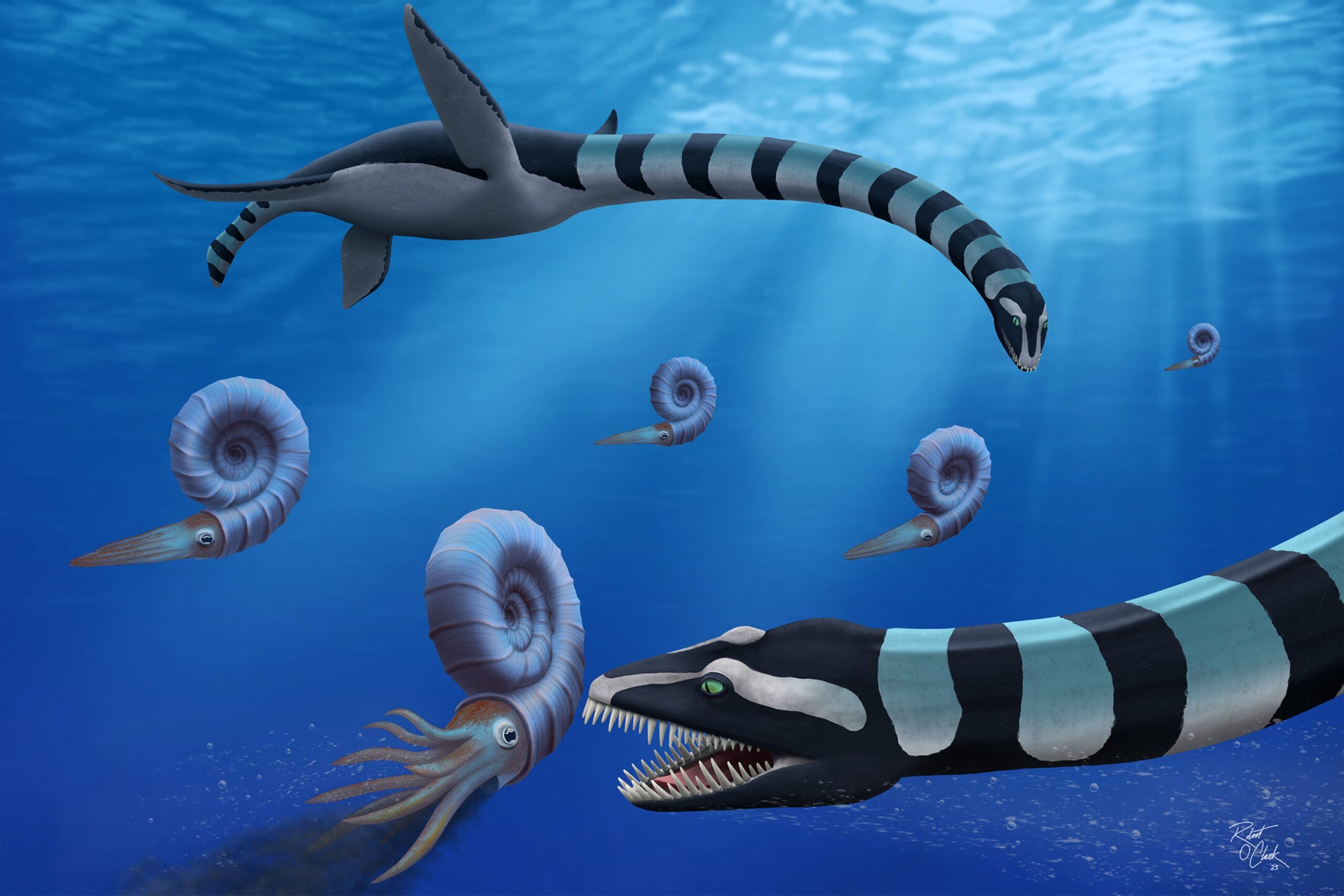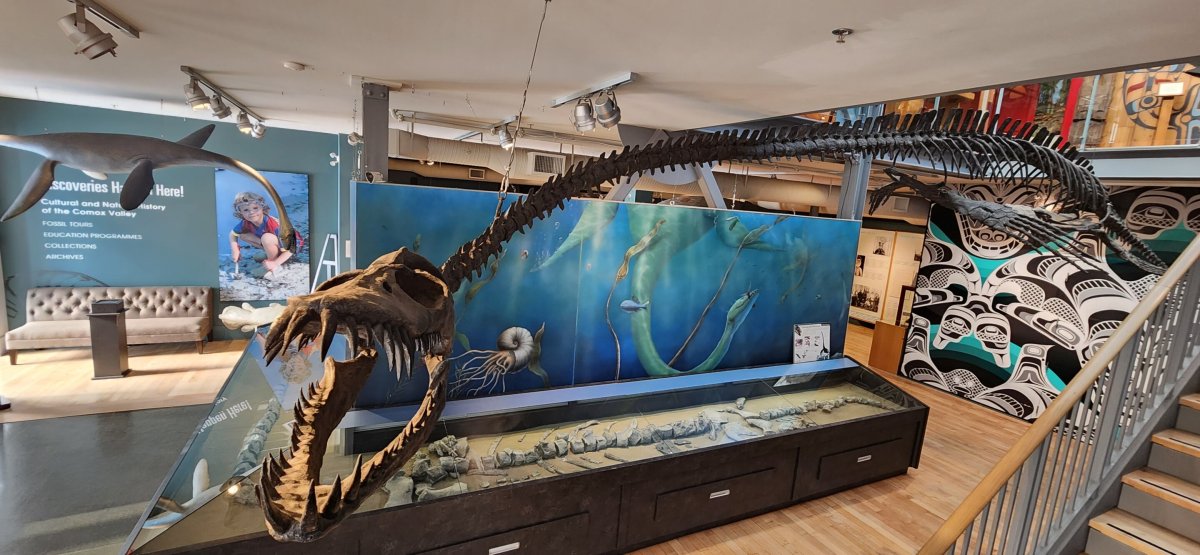
An iconic and much-loved ancient sea monster has been revealed to be an entirely new and “very odd” species of plesiosaur—solving a nearly 40-year-old fossil mystery.
Traskasaura sandrae, which lived some 85 million years ago around what is today Canada’s Vancouver Island, grew to at least 39 feet long.
Like other plesiosaurs, it had a long neck, comprising at least 50 bones, but also “robust” teeth that would have been ideal for crushing the shells of its ammonite prey.
Unlike its counterparts, however, Traskasaura sandrae had an odd mixture of classic and evolved plesiosaur traits, which the researchers believe may have made it the first to be able to hunt prey from above, with a strong affinity for downward swimming.
“Plesiosaur fossils have been known for decades in British Columbia,” said paper author and evolutionary biologist professor Robin O’Keefe of Marshall University, West Virginia, in a statement.
“However, the identity of the animal that left the fossils has remained a mystery, even as it was declared British Columbia’s provincial fossil in 2023.”
Robert O. Clark
The first specimen of Traskasaura was unearthed in 1988 on Vancouver Island, on the bank of the Puntledge River, by father-and-daughter pair Michael and Heather Trask, after whom the new genus has been named.
This find, of a largely complete but poorly preserved adult, was dated back to the Santonian—the geological age within the Late Cretaceous that spans from around 86.3–83.6 million years ago.
Since then, two additional specimens have been recovered from the island—one upper limb bone, as well as a well-preserved juvenile skeleton including girdles, limbs and the chest bones. The three specimens were first described in scientific literature in 2002.
At that time, however, researchers were reluctant to create a new genus based primarily on the original, adult, specimen—which featured few “unambiguous” features.
In the new study, however, O’Keefe and colleagues detail a new and “excellently preserved” partial skeleton of the Puntledge River plesiosaur, shining fresh light on the mysterious creature while finally enabling it to be confirmed as both a new species and genus.
“The fossil record is full of surprises. It is always gratifying to discover something unexpected,” commented O’Keefe, who calls the newly classified species “strange” and “fascinating.”
He elaborated: “The scientific confusion concerning this taxon [species] is understandable. It had a very odd mix of primitive and derived traits.
“The shoulder, in particular, is unlike any other plesiosaur I have ever seen—and I have seen a few.”

The Courtenay and District Museum and Paleontology Center
“With the naming of Traskasaura sandrae, the Pacific Northwest finally has a Mesozoic reptile to call its own,” said O’Keefe.
The Mesozoic is the geological era spanning from 252 to 66 million years ago.
The biologist continued: “Fittingly, a region known for its rich marine life today was host to strange and wonderful marine reptiles in the Age of Dinosaurs.”
The Traskasaura sandrae specimens are currently on display to the public at the Courtenay and District Museum and Paleontology Center in Courtenay, British Columbia.
Do you have a tip on a science story that Newsweek should be covering? Do you have a question about fossils? Let us know via science@newsweek.com.
Reference
O’Keefe, F. R., Smith, E. A., Clark, R. O., Otero, R. A., Perella, A., & Trask, P. (2025). A name for the Provincial Fossil of British Columbia: A strange new elasmosaur taxon from the Santonian of Vancouver Island. Journal of Systematic Palaeontology, 23(1). https://doi.org/10.1080/14772019.2025.2489938
